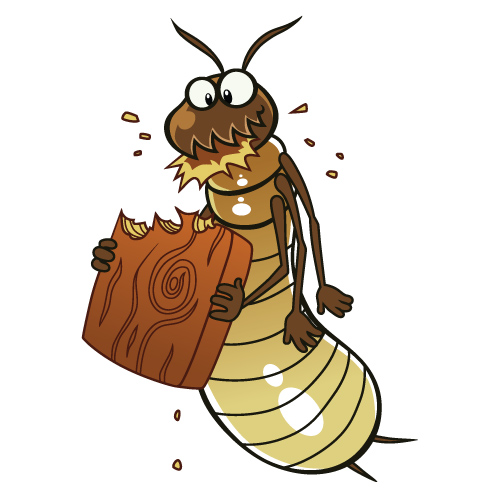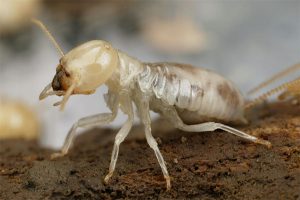
11 May Termites
 Owing to their wood-eating habits, many termite species can do great damage to unprotected buildings and other wooden structures. Their habit of remaining concealed often results in their presence being undetected until the timbers are severely damaged, leaving a thin layer of a wall that protects them from the environment. Of the 3,106 species known, only 183 species cause damage; 83 species cause significant damage to wooden structures. In North America, nine subterranean species are pests; in Australia, 16 species have an economic impact; in the Indian subcontinent 26 species are considered pests, and in tropical Africa, 24. In Central America and the West Indies, there are 17 pest species. Among the termite genera, Coptotermes has the highest number of pest species of any genus, with 28 species known to cause damage. Less than 10% of drywood termites are pests, but they infect wooden structures and furniture in tropical, subtropical and other regions. Dampwood termites only attack lumber material exposed to rainfall or soil.
Owing to their wood-eating habits, many termite species can do great damage to unprotected buildings and other wooden structures. Their habit of remaining concealed often results in their presence being undetected until the timbers are severely damaged, leaving a thin layer of a wall that protects them from the environment. Of the 3,106 species known, only 183 species cause damage; 83 species cause significant damage to wooden structures. In North America, nine subterranean species are pests; in Australia, 16 species have an economic impact; in the Indian subcontinent 26 species are considered pests, and in tropical Africa, 24. In Central America and the West Indies, there are 17 pest species. Among the termite genera, Coptotermes has the highest number of pest species of any genus, with 28 species known to cause damage. Less than 10% of drywood termites are pests, but they infect wooden structures and furniture in tropical, subtropical and other regions. Dampwood termites only attack lumber material exposed to rainfall or soil.
Drywood termites thrive in warm climates, and human activities can enable them to invade homes since they can be transported through contaminated goods, containers and ships. Colonies of termites have been seen thriving in warm buildings located in cold regions. Some termites are considered invasive species. Cryptotermes brevis, the most widely introduced invasive termite species in the world, has been introduced to all the islands in the West Indies and to Australia.
In addition to causing damage to buildings, termites can also damage food crops. Termites may attack trees whose resistance to damage is low but generally ignore fast-growing plants. Most attacks occur at harvest time; crops and trees are attacked during the dry season.
The damage caused by termites costs the southwestern United States approximately $1.5 billion each year in wood structure damage, but the true cost of damage worldwide cannot be determined. Drywood termites are responsible for a large proportion of the damage caused by termites.
To better control the population of termites, various methods have been developed to track termite movements. One early method involved distributing termite bait laced with immunoglobulin G (IgG) marker proteins from rabbits or chickens. Termites collected from the field could be tested for the rabbit-IgG markers using a rabbit-IgG-specific assay. More recently developed, less expensive alternatives include tracking the termites using egg white, cow milk, or soy milk proteins, which can be sprayed on termites in the field. Termites bearing these proteins can be traced using a protein-specific ELISA test.
